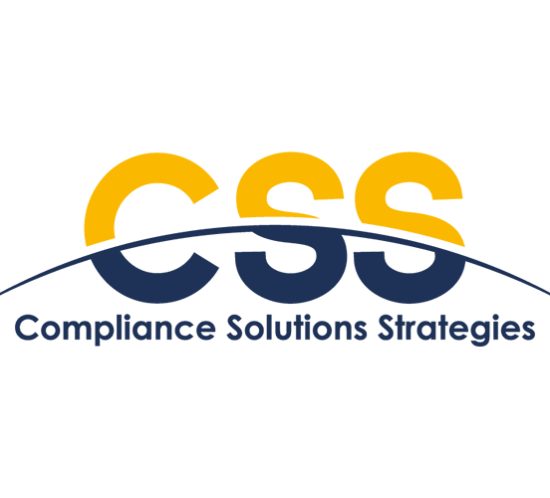ComplianceCast Predicts 2017 Compliance Developments
As 2017 begins to take shape, Ascendant reviews new investment adviser regulatory and compliance trends across the DOL Fiduciary Rule, the November Election, and Dodd-Frank regulation.
Last December, Ascendant ComplianceCasts predicted the “pendulum swings some” in 2016. This presentation covers up-to-date regulatory information and issue summaries for your Annual Compliance Program Reviews, and then adds a handful of predictions on how much the pendulum swings in 2017, under a new presidential administration.
This ComplianceCast covers:
- Implementation of Form ADV Amendments in late 2017
- DOL and SEC Fiduciary Rules under the Trump Administration
- SEC Data Analytics Re-enforced
- Private Fund Regulation Trending
- New SEC Commissioners in Early 2017
- SEC Guidance on IA Regulatory Matters
- Predictions for the Next 12 Months
To request a download of the episode, click here.
CCO Liability – Line in the Sand
In an October 2013 speech that delved into CCO liability, SEC Chair Mary Jo White said, “(a)lthough we do occasionally bring enforcement actions against compliance personnel, compliance officers who perform their responsibilities diligently, in good faith, and in compliance with the law are our partners and need not fear enforcement action.”
As the saying goes, actions speak louder than words, so until the SEC draws a hard straight line in the sand indicating the level of follow-through/due diligence by a chief compliance officer (CCO), there will be a need for protecting yourself against escalating defense cost. Remember, a CCO needs to fight for his or her reputation to ensure future employment. The “broken window” approach does not allow for settlement without an admission of guilt. This is contrary to the CCO’s goal of continuous employment and a secure financial future.
Recently, I attended the Investment Company Institute (ICI) Compliance Conference in Washington, DC that reinforced the belief that CCOs need to protect themselves and that not everything is warm and fuzzy with the regulators. As a matter of fact, from my perspective as an insurance broker dealing with investment industry claims regularly, the concerns go beyond the SEC and carry over to the DOL. It makes you wonder how closely the two agencies are working together when initiating investigations against investment management firms.
As stated at the ICI Conference, “Notwithstanding those reassurances, the SEC has brought actions against CCO’s for negligence in conducting reviews of client accounts and for failing to put policies and procedures into place. These cases seem to fall outside the more egregious actions one would expect of enforcement action. Orders stating that the CCO was responsible for “implementation” of firm’s policies and procedures prompted dissent from former Commissioner Gallagher, who believes that the SEC is trending toward strict liability for CCO’s actions. This sends “a troubling message that CCOs should not take ownership of their firm’s compliance policies and procedures, lest they be held accountable for conduct that, under (the Rule), is the responsibility of the adviser itself.”
The point is, the CCO is a target, and the legal defense costs are going to add up. Don’t expect the regulators to reimburse you, even if you come out on top. This is demonstrated by the Thomas Delaney case that recently went through an EAJA (The Equal Access to Justice Act) administrative hearing to recoup attorney fees and litigation expense. Within the SEC Initial Decision Release No. 976 Administrative Proceeding File No. 3-15873, it states the following
The Division acknowledges that its position encompassed two charges – aiding and abetting, on the one hand, and causing, on the other.” Div. Resp. at 8. But it argues that Delaney’s victory on the aiding and abetting charge is meaningless for EAJA purposes because it was not a “discrete” portion of the proceeding. Id. at 8-10. I reject the Division’s assertion, for which it cites no legal precedent, that claims cannot be discrete if they involve the same underlying facts. Although I found, and the parties agree, that similar evidence was relevant to both the aiding and abetting claim and the causing claim (see Initial Decision at 49; Delaney Supp. Resp. at 4; Div. Resp. at 9-10), this does not displace Congress’s creation of different substantive law standards and remedies for the two distinct theories of secondary liability.
The bottom line is this: defense costs continue and they add up whether you did something wrong or not. This creates the need to consider an individual liability policy for Chief Compliance Officers. Unless the firm’s bylaws appoint the CCO as a corporate officer and/or filed with the state in which the firm is incorporated, they are under no obligation to indemnify the CCO’s legal fees. As a matter of fact, the CCO could be at odds with his/hers employer; thus, they may withhold any indemnification. There is an insurance product that provides the necessary defense costs, including situations where the employer withholds indemnification for a certain period of time. Keep in mind that the employer’s liability policy may not have the appropriate coverage in place and that it’s the employer who owns and controls the insurance policy, not you, the CCO.
Andrew J. Fotopulos is President of Starkweather & Shepley Insurance Corp. of Massachusetts and their Financial Institution Practice Group. He also developed CCO Protect (www.ccoprotect) offered through RISCO Insurance, the wholesale division of Starkweather & Shepley Insurance.
10 Reasons to Attend Ascendant’s San Diego Conference
AML. DOL. Big Data. Election 2016.
The list of rulemaking changes, technology advancements and possible policy shifts is enough to send you hiding for cover under your desk. Educating yourself is your best option for assisting your firm with the continually evolving regulatory landscape.
Ascendant’s fall Compliance Conference will be held at the Loews Coronado Bay, San Diego, September 26-28, 2016, offering the latest expert insight on key compliance topics, including common risks, best practices, and solutions ─ along with other key regulatory initiatives, exam priorities and critical focus subjects. Watch the video below for some of the top reasons to join us in San Diego. For registration information, click here.
Planning for the Annual Review and Reporting
Rule 206(4)-7 of the Advisers Act and Rule 38a-1 of the Investment Company Act require an Investment Adviser and a Fund, respectively, to review policies and procedures annually to determine their adequacy and the effectiveness of their implementation.
The SEC highlights specific focus areas including portfolio management processes, trading practices, proprietary trading, disclosure accuracy, and records maintenance, among other things.
In 2006, then-OCIE Associate Director for Examinations Gene Gohlke listed nine questions that SEC examiners consider in scrutinizing an annual review. Those questions still resonate today and can inform your process.
They include:
- Who conducted the review?
- What was reviewed?
- When was it conducted?
- How was it conducted?
- What were the findings from the review work?
- What recommendations were made?
- What is the current status of implement recommendations?
- What documentation was created/retained to reflect the work done?
- What was the involvement of senior management in the review?
To be blunt, the process should be a team effort, with different departments “owning” their subject matters. Doing so allows the CCO to keep compliance on the radar for firm employees and sets the “culture of compliance” that the SEC looks for. It cannot be stressed enough that involving management and employees outside the compliance department sets a tone firm-wide.
In our recent ComplianceCast, “Planning the Annual Review and Reporting,” consultants Allison Fraser and David Lourie go in-depth on the complex topic.
Learning objectives include:
- Planning and Documentation
- Testing the Adequacy and Effectiveness of Policies and Procedures
- Reporting Annual Review Findings
- Responding to Issues Identified by the Annual Review
- Common Deficiencies
To download this ComplianceCast presentation, please fill out our request form by clicking here.
BCP, ADV and other SEC Targets Discussed at NEBDIAA
Big data is now embedded into the fabric of the SEC and will likely inform the selection of examination targets for the foreseeable future, based upon comments from Mayeti Gametchu, Assistant Regional Director of the Boston Office of the U.S. Securities and Exchange Commission. Assistant Regional Director Gametchu spoke to an audience of financial services firms at the recent quarterly meeting of the New England Broker Dealer and Investment Adviser Association (NEBDIAA), who were gathered at the Federal Reserve Bank of Boston. Joining her on the panel were Kara Brown and Elizabeth Marino, both counsel with Sidley Austin’s Boston office. Below are a few select takeaways from the wide-ranging panel discussion.
BCP’s and Transition Plans
The SEC is joining other regulators who have already addressed business continuity planning and transition planning to some extent.
In June, the SEC proposed new Rule 206(4)-4 to require investment advisers to adopt written business continuity and transition plans. The proposed rule mandates specific components to address, but appears to give some flexibility in how those items are addressed at a firm. The rule stems from the sweep exam conducted following Hurricane Sandy, during which examiners observed a wide disparity in the business continuity practices of firms. The SEC understands that every firm has different processes and different vendors, and may address BCP risks differently, but recognizes that all advisers should be doing something.
There has been some industry backlash over the fact that the rule is proposed as an anti-fraud rule rather than under the Compliance Programs rule, because if the rule is adopted, advisers who have BCP deficiencies would run the risk of a fraud finding. Assistant Regional Director Gametchu stated that firms should not worry that it is a fraud rule and not get caught up in the specific statutory authority, because essentially it is a policies and procedures rule.
The transition planning component is intended to address the “other” types of disruptions to an adviser’s business, such as bankruptcy, loss of key personnel, and acquisitions that result in an assignment of advisory contracts. The SEC is looking at these issues now, even in advance of the rule being adopted. If they see key personnel who appear close to retirement or similar factors in play, they are going to ask how the firm is prepared.
ADV Amendments
No surprise here, but the ADV amendments adopted by the SEC are part of the SEC’s big data initiative designed to help effectively deploy the SEC’s limited examination resources more effectively, and to help identify firms to examine for risk-based examinations. The ADV rules are effective in October 2017.
There are more requirements to disclose details for separately managed account positions. The practice of using outsourced CCOs and the use of social media sites controlled by the adviser now have to be disclosed, and these feed into the risk rating for a firm. The fact that an adviser is using an outsourced CCO or works with an outside compliance consultant is not, in and of itself, indicative of a higher risk at the firm or a lower risk at a firm. They are all just factors that will be looked at in identifying which firms to examine because the SEC is resource-strained and is conducting risk-based exams to be more effective.
Other Focus Areas of the SEC
Areas the SEC is trying to get more information on as well as where it is inquiring at firms during exams include:
- Robo-advisers, high-speed trading, algos/quantitative models, and any system where computers are making decisions
- Supervision, particularly for recidivist employees (see the related SEC Risk Alert issued on Sept. 12)
- Dual registrants (there are a lot of issues relating to the recommendation of affiliated products, and that conflicts of interest are not adequately disclosed at firms)
- A continuation of the ReTIRE initiative which began in 2015 and is not going away any time soon, and,
- Subadvisory due diligence; specifically, are subadvisory practices adequately and accurately disclosed?
SEC Announces Record Year for Enforcement
With a continued focus on technology tools to filter data and detect illegal conduct in the markets, the SEC announced a record year for enforcement. In fiscal year 2016, it completed 868 total actions, an increase of almost 15 percent over just two years ago.
The 868 actions included 160 involving investment advisers or investment companies, and 98 independent or standalone cases involving investment advisers or investment companies, both records in a fiscal year. Another high mark came in enforcement actions related to the Foreign Corrupt Practices Act, with 21.
In all, the Commission obtained judgments and orders totaling over $4 billion in disgorgement and penalties, a number in line with each of the last two years.
Notable was the rise in standalone actions from 2014 until present day, ramping up from 413 to 548, an increase of nearly 33%.
“Over the last three years, we have changed the way we do business on the enforcement front by using new data analytics to uncover fraud, enhancing our ability to litigate tough cases, and expanding the playbook bringing novel and significant actions to better protect investors and our markets,” SEC chair Mary Jo White said in a statement.
To see more, click here.








